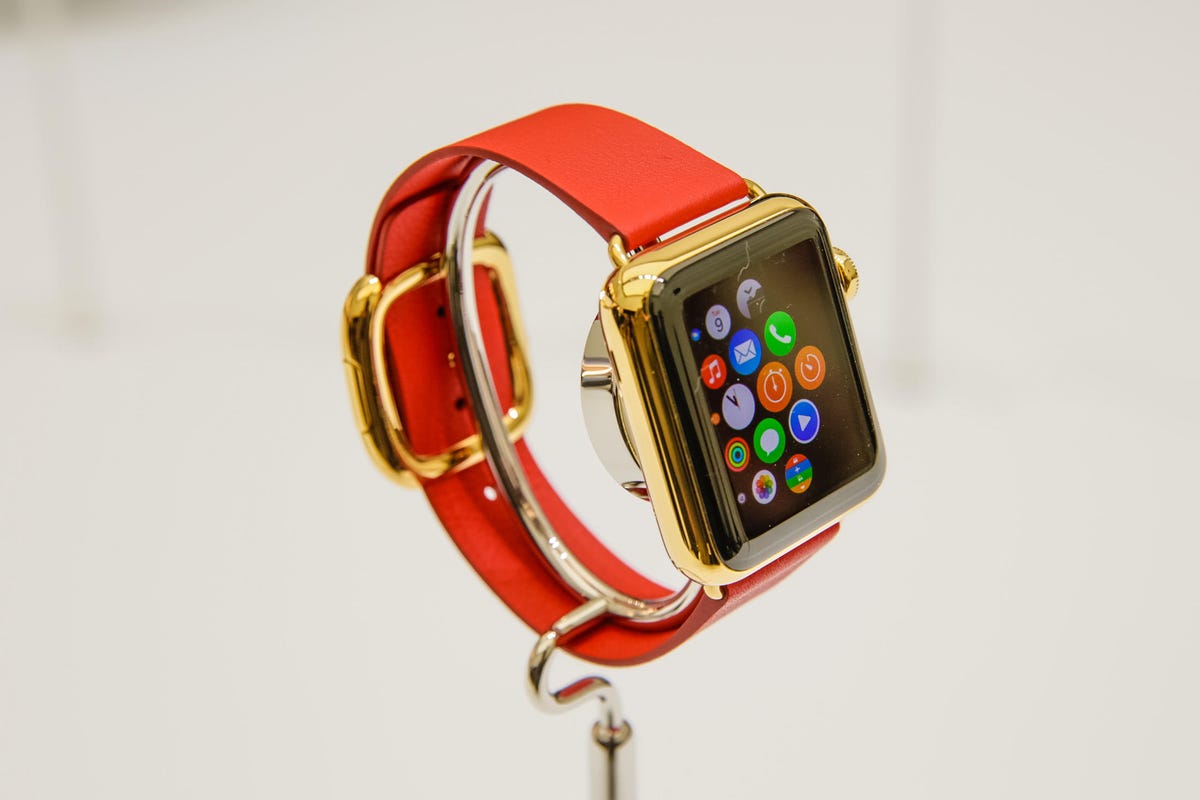
James Martin/CNET
The Apple Watch is not expected to arrive until next year, yet consumers are already crowning it as the most exciting wearable gadget out there.
Apple’s was the most highly anticipated wearable device among respondents to a survey from PricewaterhouseCoopers, released Monday. Among the findings, 59 percent of customers say they would be very interested in checking out the Apple wearable, followed by 57 percent who were interested in a potential product from Amazon and 53 percent interested in one from Google.
The survey’s results indicate the strength of the wearable market. One in five US adults owns a wearable today, according to PwC. At nearly 20 percent, the market for wearables now sits at roughly the same position as the tablet market two years after the release of the original iPad. The number of US adults that owned a tablet grew from 20 percent to 40 percent over the last two years, according to PwC.
PwC expects sales of wearable devices to hit 19 million devices by year’s end, tripling last year’s figure according to projections made by market researcher IDC. By 2018, wearable sales could reach 130 million units and the market could rise to $6 billion dollars.
Wearables, which constitute everything from wristbands and watches to glasses and ear pieces, are poised to become the next frontier in consumer technology. Tech and even non-tech companies are pouring money into the space in an effort to capitalize on what may be the next big market after tablets and smartphones. The field now includes large players like Intel, Google, LG, Samsung and now Apple; startups like Fitbit, Jawbone, Pebble and Misfit; and traditional product makers like Nike and Fossil.
While the wearable device market is likely to grow quickly with so many interested parties involved, lingering questions remain. Among them is how much customers will actually use these devices. Users concerned with privacy and security were scared away from using them, the survey found, raising questions about how much customers trust the tech industry with their health and fitness information. As a result, PwC’s survey said 33 percent of wearable device owners abandoned their device after one year.
Furthermore, wearable devices on the market today are not offering enough value for the price, respondents said. The survey found that 76 percent of respondents said that they did not need a wearable device to replace an existing device like a smartphone, meaning these gadgets need to offer more distinct features to grab customer’s attention.
“For wearable products to take off, they will need to carve out a distinct value proposition. And, because the phone is such a fixture, for the short term, at least, wearable technology will need to seamlessly integrate with our existing technology,” the report says.
The target market for these devices is wide and varied, PwC said. Parents and caretakers for the elderly are considering wearable devices as an option to help keep their children and grandparents safe and monitor for emergency situations. Customers between the ages of 18 and 34, who self-identify as early-adopters, are also a large potential segment.
“Businesses must evolve their existing mobile-first strategy to now include the wearable revolution,” said Deborah Bothun, PwC’s entertainment, media & communications leader.
For Apple, its upcoming smartwatch has a laundry list of requirements and features to include if it’s to help energize the wearable market as the iPhone, iPad and iPod have done to smartphones, tablets and MP3 players.
Update at 2:30 p.m. PT, October 21: Added link to PwC report.



